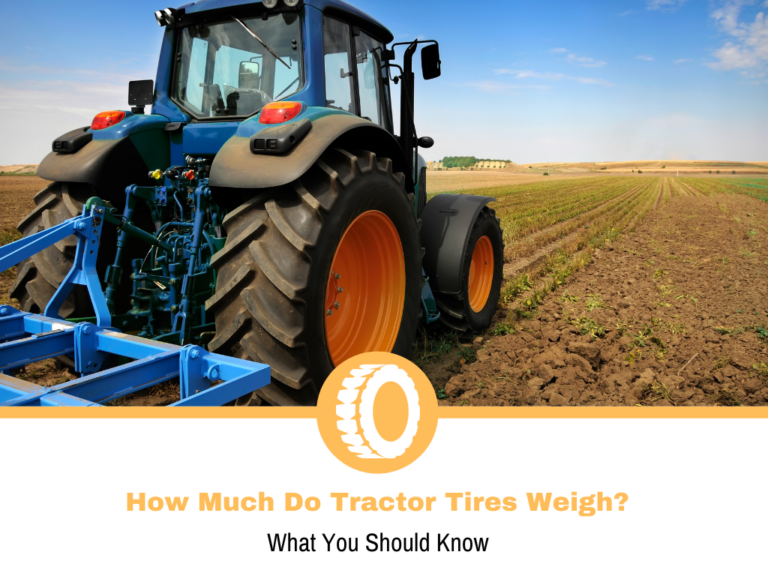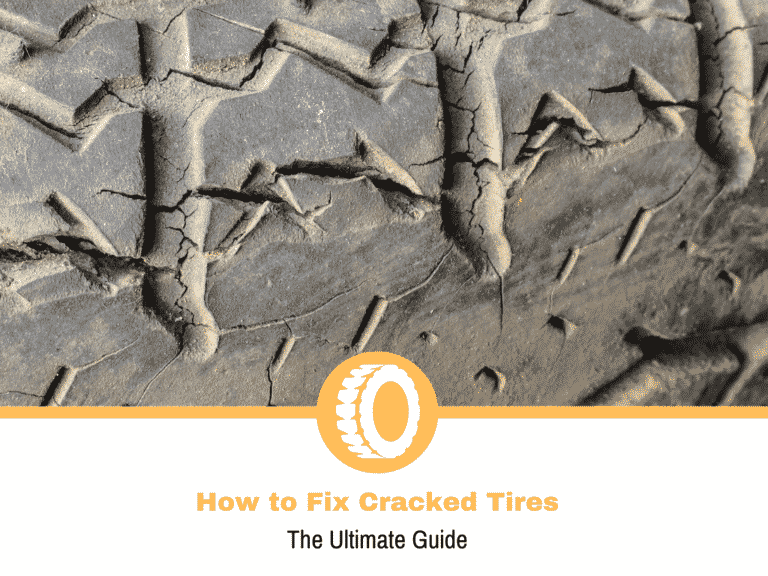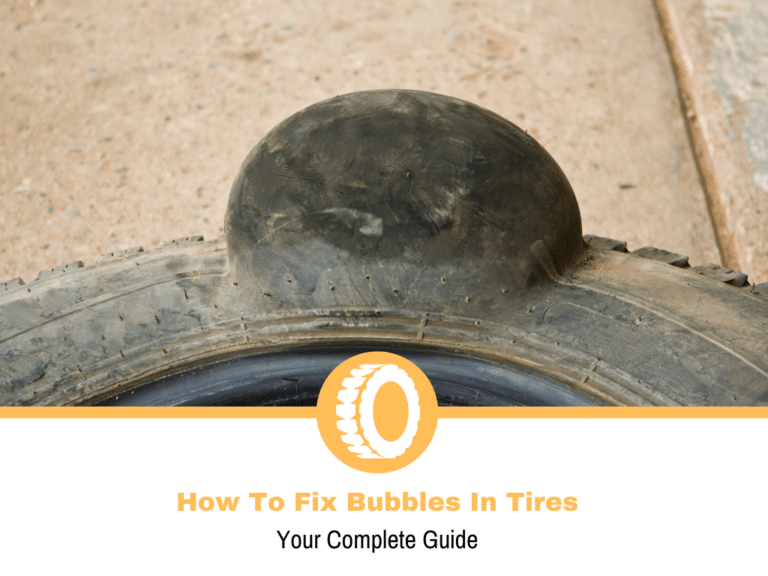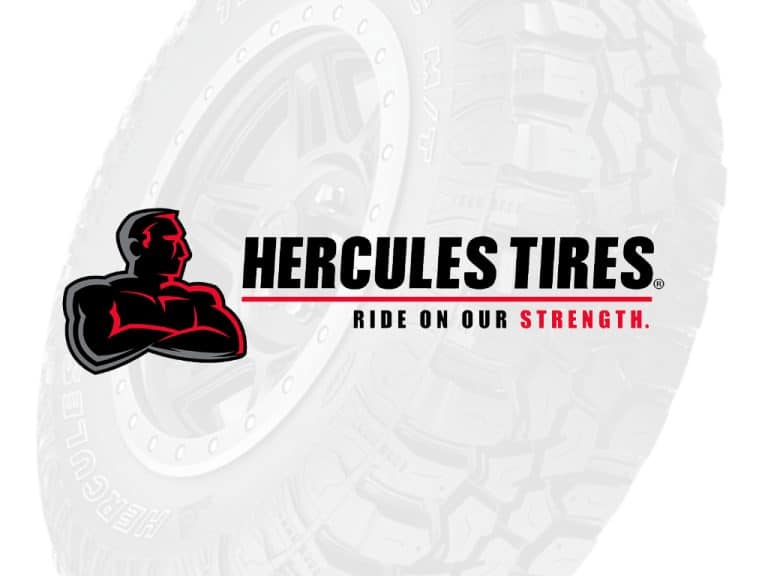What is a Tire Blowout?
Whenever people get into their cars, the one thing they’re hoping is for the drive to be as uneventful as possible. They want their vehicle to take them to their destination and to do that safely. In many situations, that’s exactly what happens, which is excellent. As good as this sounds, things aren’t as ideal as you may think.
Driving on the road brings many dangers to some of the car components, and what’s the one thing that’s most exposed? The tires. They’re the only part of the car making contact with the road and serve several purposes, including keeping you safe.
Many people spend decades driving without experiencing any issues, while others, like me, have encountered some problems. One of the more common ones is a blowout, which I’ll be talking about today.
In this guide, I’ll explain what a blowout is, how it happens, and if you can do anything to prevent it.
What is a Tire Blowout?
In the simplest terms, a tire blowout is when your tire explodes. Many people confuse this with a puncture, but they are quite different. When you have a puncture, the air slowly leaks out from the inside of the tire, and you may not notice it instantly. A tire blowout is much more violent.
The main reason it’s called a blowout is because the inner pressures explode the weakest point of the tire. It happens instantly, which is why you’ll hear a bang or a pop when that happens, depending on the severity.
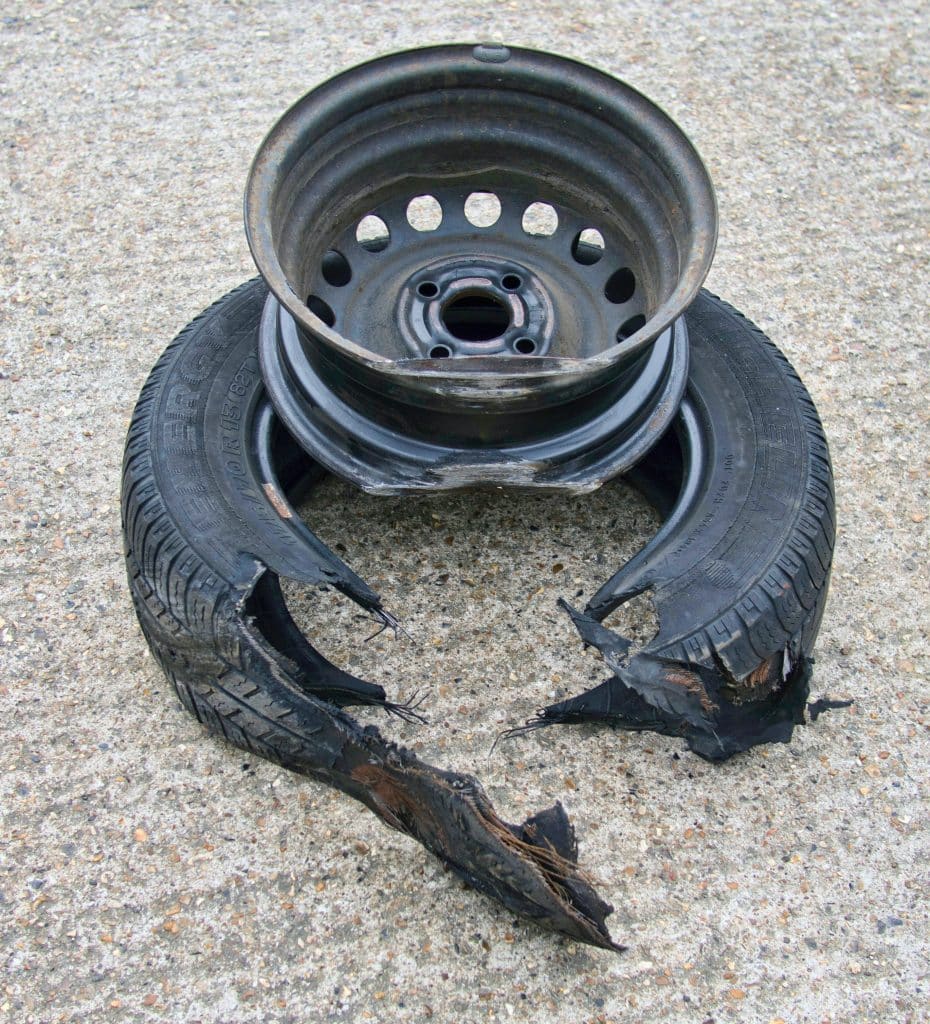
Blowouts aren’t overly common, but they can happen. The main question is: why? The culprit is on the inside of the tire. As you’re racking up miles, the tire takes some beating, which is usually fine, and the tire doesn’t complain. With that said, there are plenty of things that can happen that will cause damage to the internal construction.
Identifying damage to the internal part of the tire is difficult because you cannot see it. The tire may seem fine at first, but after a while, you may see a bulge, or the tire may have a blowout. Bulges usually lead to blowouts, so if you see one, you should know that the tire is a ticking bomb.
What can cause a Blowout?
I’m going to drop a bomb that may get some people mad, but most of the reasons that can lead to a tire blowout are because of the owner. It comes down to negligence or poor maintenance, but let’s look at each one to get a better understanding.
Old Tires
When it comes to a tire’s age, multiple aspects are involved, most of which can lead to reduced performance. In this case, it can result in a blowout, as unlikely as that may sound. There are two aspects that we should talk about.
The first one is old tires that have been driven a lot, meaning there isn’t much tread depth. Over the years, these tires have been to hell and back, and as good as manufacturers make them, they aren’t indestructible. Over time, the internal components start to give away, which is why we don’t see tires that can last for 20 years and 200 thousand miles.
What if the tires are old but still have a lot of tread? They should be better, but they’re not. When the rubber on the tire is “fresh,” and by fresh, I mean not older than several years, it deals with heat much better. It can take it and dissipate it better, which isn’t the case with old rubber. These tires won’t do a good job at managing the heat which transfers to the internal construction. Yes, it’s designed to operate at higher temperatures, but these will be higher. Over time, it will let go, leading to a blowout. This is especially problematic at highway speeds.
The moral of the story here is to avoid driving with tires that are too old.
Incorrect Pressure
There are many myths and a few truths about deviating from the recommended pressure for the tires. Overinflating or underinflating your tires carries risks, which is why you shouldn’t drive like that for too long. In terms of a tire blowout, the culprit here is underinflation.
Tires lose a bit of pressure over time, so it’s essential to monitor them constantly. A small drop isn’t a massive problem, but there is a point where the pressure is too low. Even though the tire may seem fine, it will be a bit squished, which is a problem.
An underinflated tire has less pressure than it should, so the car’s weight is pushing it down. As it rolls, there is more friction, and the tire’s ability to dissipate heat isn’t as it should be. As in the previous section, excessive heat isn’t healthy for the tire and can lead to a blowout.
I have to add a small disclaimer here because I know someone will bring this up. Does this mean that overinflating the tires is better? In theory, yes, but in practice no. Overinflating the tire reduces the contact patch, which theoretically won’t cause overheating. With that said, you’re introducing uneven wear and reduced performance into the mix, so it’s not worth it. It’s a similar story with overinflation for reduced MPG. Theoretically, it should work, but you’re not saving anything because the tire won’t last nearly as long as it should.
Don’t Overload your Car
From the factory, cars are designed to operate in specific conditions, and weight is one of those. Each car has a maximum loading or towing capacity, which many people ignore. Overloading your car puts additional strain on the suspension components and, most importantly – the tires.
The second aspect in this regard is the tire load index. It’s the tire’s ability to carry certain weight safely, often exceeding one quarter of the car’s weight. This considers additional elements, like passengers and cargo, which is why we see higher numbers.

When it comes to overloading, you’re doing two things: putting too much weight on the car’s suspension, which increases the overall weight. Going too much overboard will put more weight on the tires, usually the rear ones, than what they’re designed to handle.
Prolonged driving in these conditions compromises the integrity of the tire, which can lead to a blowout. Therefore, it’s essential to check the specs and never put more load in your car than the manufacturer specified.
Curbs, Potholes, and Debris
The roads we drive on aren’t the smoothest, so the tires take a hit every time you go for a drive. Manufacturers make them as durable as possible, so the tires will be fine in most situations, and you won’t have any issues. With that said, things aren’t always like that.
There are plenty of situations where you may drive over a large pothole at higher speeds, which can be problematic. At those speeds, the tire may hit the edge of the pothole, and the force will squish the sidewall. Depending on the speed and the force, the tire may be fine, but it can also end up with some damage.
At first glance, the tire may seem fine on the outside, but that doesn’t mean the internal construction isn’t compromised. You won’t notice this immediately, but you may see a bulge after a while, which can lead to a blowout.
In a worse situation, the tire may have visible damage on the outside, so you can write it off. The force will squish the tire to the edge, and you may see a torn chunk from the sidewall. At this point, you won’t be able to drive anymore because, technically, this is an instant blowout.

It’s a similar story with curbs. Going over curbs slowly and gently is fine because the forces aren’t massive, and the tire won’t take a lot of damage. With that said, at higher speeds, it can cause severe damage, similar to the one I outlined in my guide on that topic.
I mentioned debris as a potential cause for a blowout, but that’s not the most common occurrence. With lots of debris on the road, it’s more likely that you’ll get a puncture, which isn’t as horrible as a blowout. That doesn’t mean that you’re immune to that.
Smaller pieces of glass, nails, or screws probably won’t lead to a blowout, but larger pieces of debris will. In a sense, it will be like someone slashed the tire while you’re driving, which is a blowout.
How to Prevent a Blowout?
The best way to prevent a blowout or at least minimize the chances of that happening is to maintain your tires well and be careful on the road.
In terms of maintenance, it’s ideal to check the tread depth and the age of the tires and replace them when needed. The same goes for the pressure. Since tires lose a bit of pressure over time, it’s a good idea to have a gauge in your car or take it to a shop or a gas station occasionally to check the pressures. It’s also important to check the pressure when the tires are cold to get the most accurate readings.
As far as carefulness is concerned, the only advice I can give you is to pay more attention to the road ahead. I’m aware that there are situations you cannot avoid, and at a certain point, you will hit a pothole, but by paying attention, you can avoid some of those situations. In a worst-case scenario, you can slow the car down enough to minimize the potential damage.

The same goes for debris in the road. Look ahead, and if you notice something, try to avoid it. When going over curbs, try to be gentle and literally crawl over them. This will ensure that the tire doesn’t get the shock, and you’ll eliminate any potential damage to the internal construction.
Conclusion
Blowouts happen, and you have to accept that. Just because you haven’t had one doesn’t mean you’ll drive for decades without finding yourself in that situation. Maybe you won’t, maybe you will, no one can tell. With that said, there are a few things you can do to minimize the risk.
At the end of the day, when you go through the reasons behind a blowout and the prevention techniques, it boils down to two things: maintenance and carefulness. As long as you’re paying attention to the road and maintaining your tires properly, you’re reducing the chances of this happening to you.

